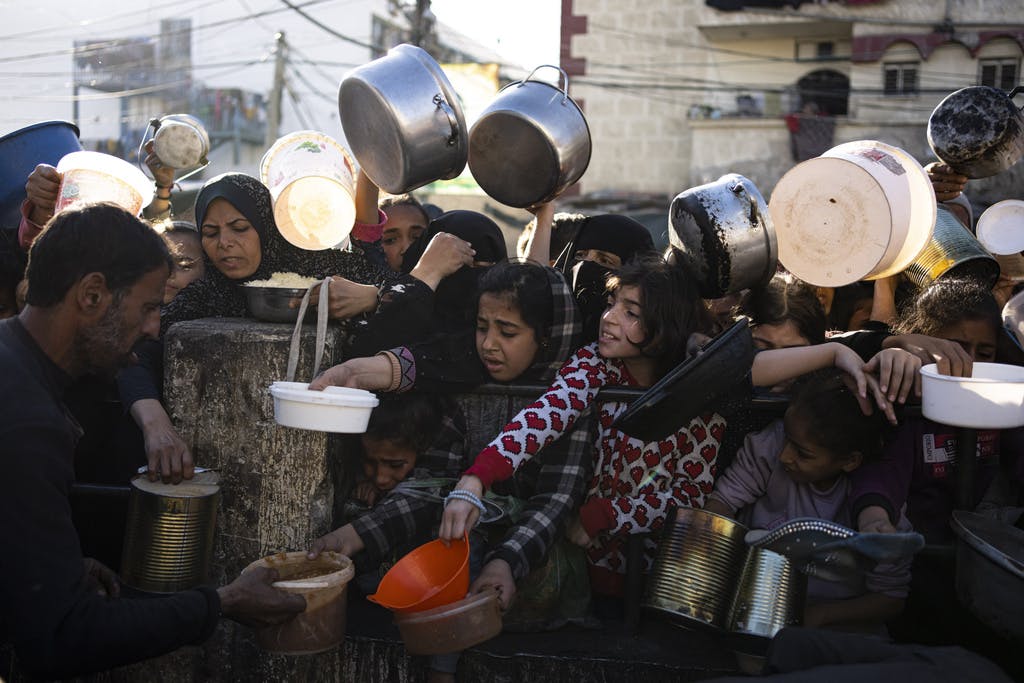Amount of Food Brought Into Gaza During War ‘Exceeds’ Minimum Humanitarian Requirements, New Study Finds
‘If the population didn’t receive food, it’s because distribution wasn’t equitable by those controlling the territory — meaning Hamas,’ one of the co-authors says.

A new scientific study that claims to offer the first detailed analysis of humanitarian aid brought into Gaza has found that the amount of food delivered into the strip during the first half of 2024 exceeded the nutritional requirements set forth by international humanitarian guidelines. The findings appear to disprove the prevailing claim that Gaza is suffering from a deadly food shortage.
The researchers, whose study was published in the “Israel Journal of Health Policy Research” on Wednesday, tracked all food shipments delivered to the Gaza strip during the first seven months of 2024, two months after Israel’s ground operations began. They used data supplied by Israel’s Coordinator of Government Activities in the Territories, which registers all food shipments brought into Gaza either by airdrops or land crossings. The registry classifies daily food shipments by item and weight.
Adjusting for projected losses, the authors estimate that a net total of 478,229 metric tons of food was supplied to Gaza over those seven months. That means that each resident had access to an average daily food supply of 3,004 calories, made up of 98 grams of protein, 61 grams of fat, and 23 milligrams of iron. Aside from February, the researchers clocked a “steady increase” in the “tonnage, energy, macronutrients and iron content” of food brought into Gaza month by month.
Those results “exceed” the per capita requirements under the Sphere humanitarian standard for food security and nutrition maintenance in crisis-affected populations, even after the researchers applied stringent assumptions of food losses amounting to 15 to 30 percent of the total. The standard takes into account a robust set of variables, including the varying dietary requirements of men and women across different age groups, including pregnant and breastfeeding women, and the potential conflict-related dietary needs of the population.
The findings appear to contradict charges levied by the International Criminal Court against Israel’s highest officials for allegedly starving the Gazan population as a war tactic. Israel’s prime minister, Benjamin Netanyahu, has long denied the ICC’s claims as a “pack of lies.” International leaders have similarly accused the Jewish state of blocking life-saving aid into the region.
The Israeli military, rather, has been sounding the alarm on Hamas’s practice of attacking and stealing aid from convoys in the region. The Israeli government estimated back in September that Hamas, since the start of the war, had pocketed at least half a billion dollars from ransacking humanitarian aid that was shipped into the strip. The terrorist organization has been accused of hoarding the aid and selling it to civilians at exorbitant prices to finance its illicit activities.
Earlier this week, a senior aid official responsible for transporting aid trucks into the strip declared that “There is no humanitarian crisis in Gaza.” The official told Israeli media outlet Maariv on Tuesday that “Every day, we transport about 400 trucks into Gaza.”
The sentiment was echoed by one of the study’s co-authors, Professor Ronit Endevelt, a former director of the Ministry of Health’s department of nutrition. “In most months when humanitarian aid was transferred, the quantity and quality of food entering was reasonable to good, meaning if the population didn’t receive food, it’s because distribution wasn’t equitable by those controlling the territory — meaning Hamas,” Ms. Endevelt told Israel Hayom.
Ms. Endevelt further decried the “claims echoing worldwide about insufficient food in Gaza” as “incorrect.” She continued: “Israel, unlike other nations at war that don’t feed the enemy, didn’t prevent humanitarian aid to the civilian population. Ultimately, Hamas seized control of much aid, profited from it, and thus accumulated funding for activities.”

